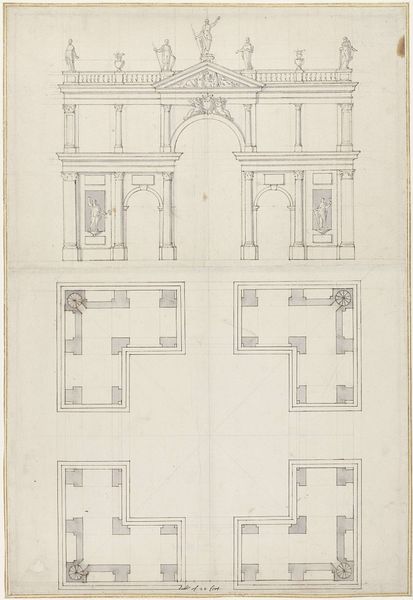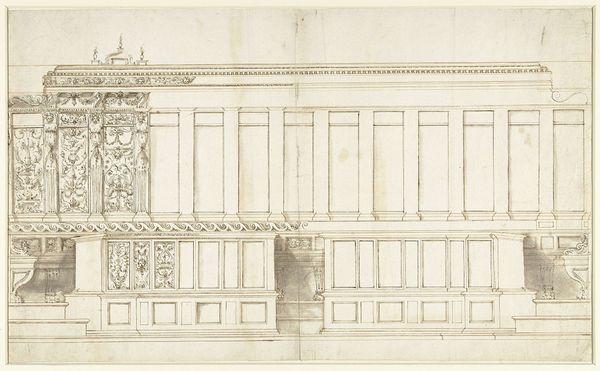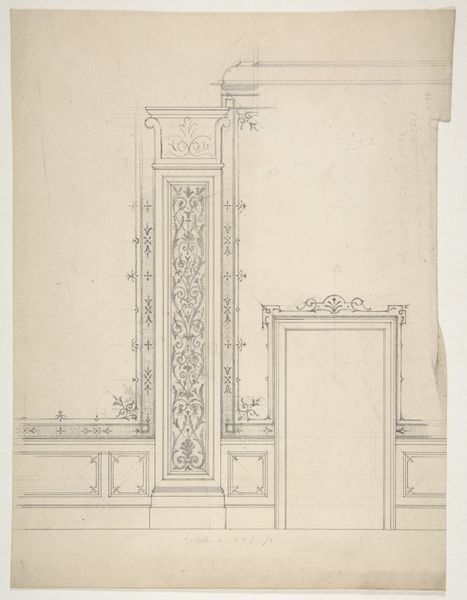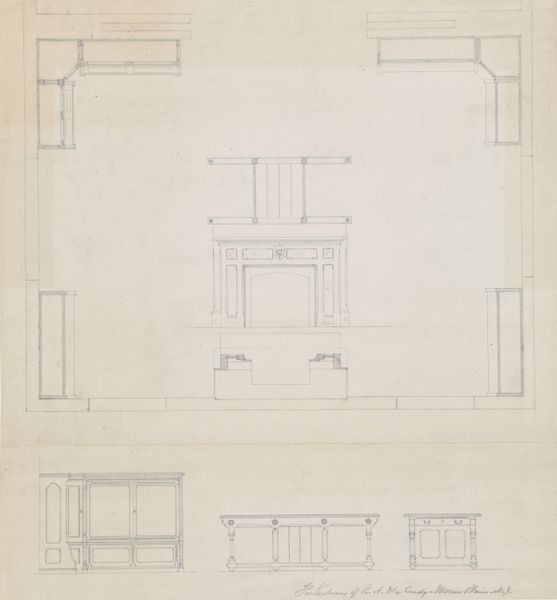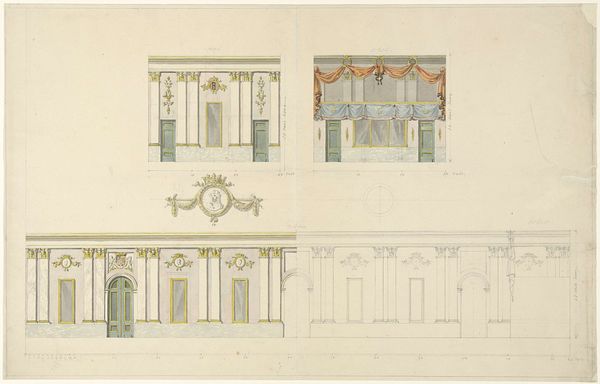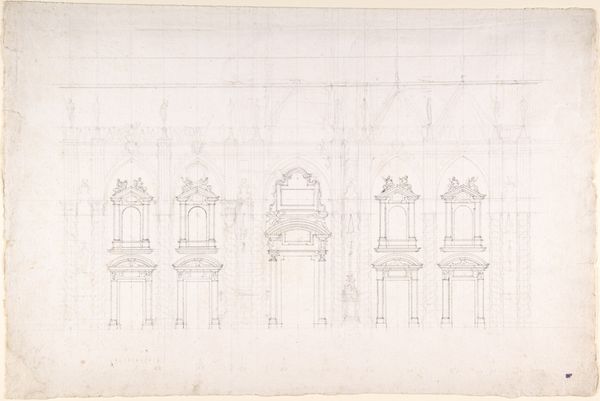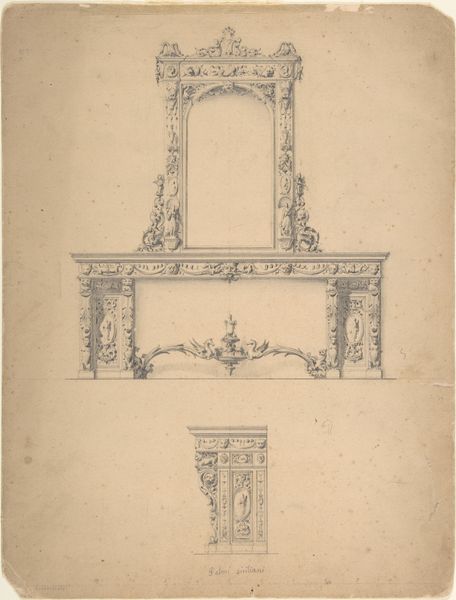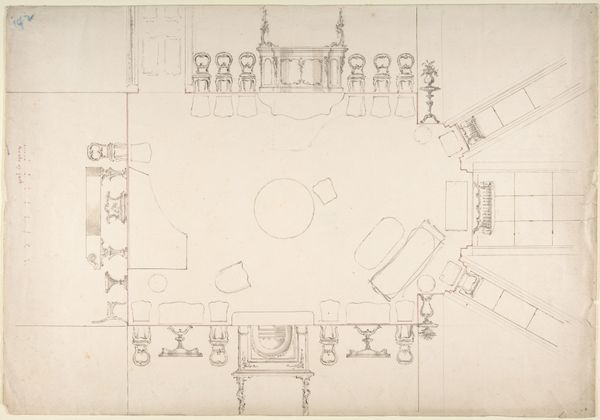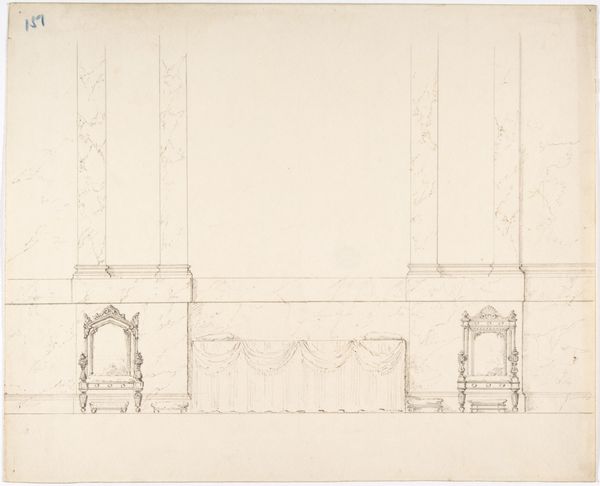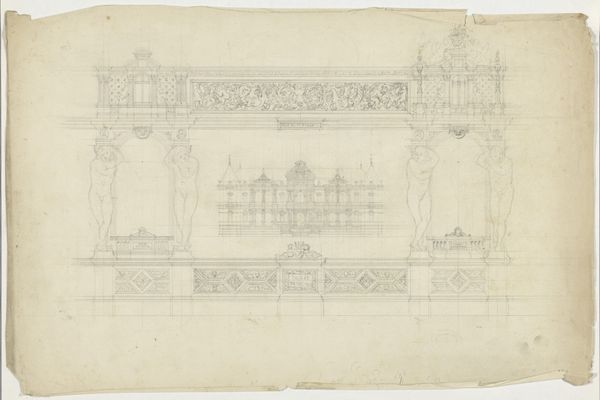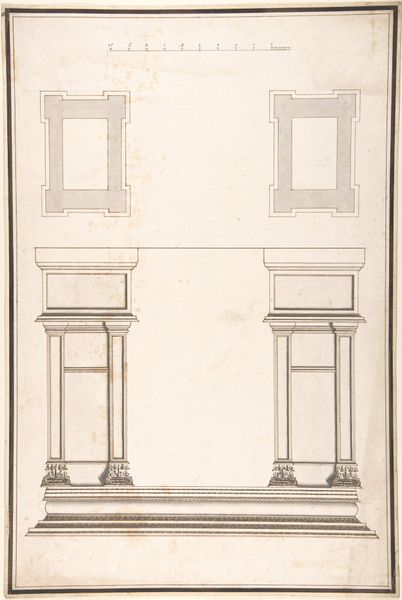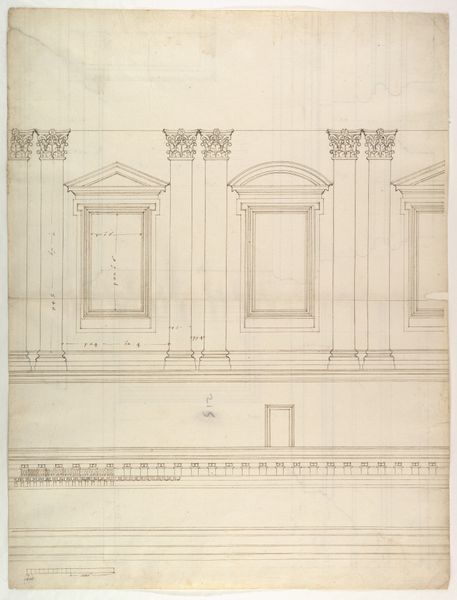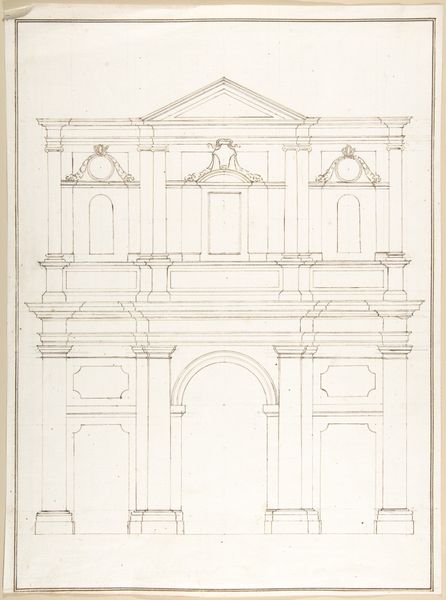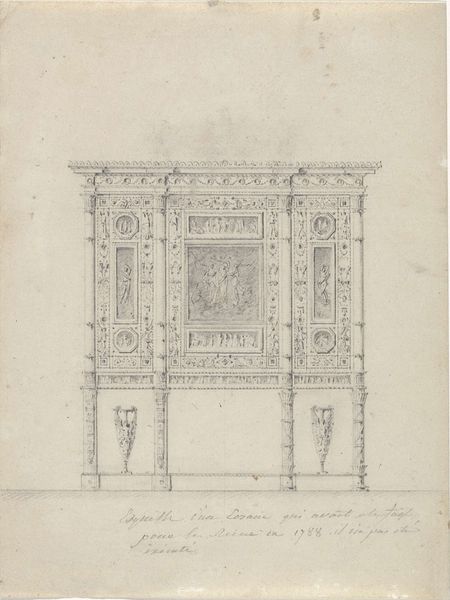
drawing, paper, ink, architecture
#
drawing
#
etching
#
paper
#
form
#
11_renaissance
#
ink
#
geometric
#
line
#
academic-art
#
architecture
Dimensions: height 437 mm, width 408 mm
Copyright: Rijks Museum: Open Domain
This is Leone Leoni's architectural design for a tomb monument with an equestrian statue. Leoni was working in the 16th century, at a time when powerful families across Europe used art and architecture to express their status. This design reflects the hierarchies of its time, both social and artistic. Equestrian statues, in particular, became symbolic of the power of the ruling class. Consider the elevated position of the rider, literally and figuratively above the masses. The identity of the person memorialized in the tomb is central; the monument is not just a marker of death, but a celebration of life, status, and legacy. While the drawing is just a design, imagine it realized in marble and bronze, dominating a public space. Notice the careful attention to symmetry and proportion, hallmarks of Renaissance classicism. It represents an era where the visual arts were deployed to reinforce and perpetuate societal structures. What does it mean to monumentalize power in stone? What stories get told, and whose are left out?
Comments
No comments
Be the first to comment and join the conversation on the ultimate creative platform.
